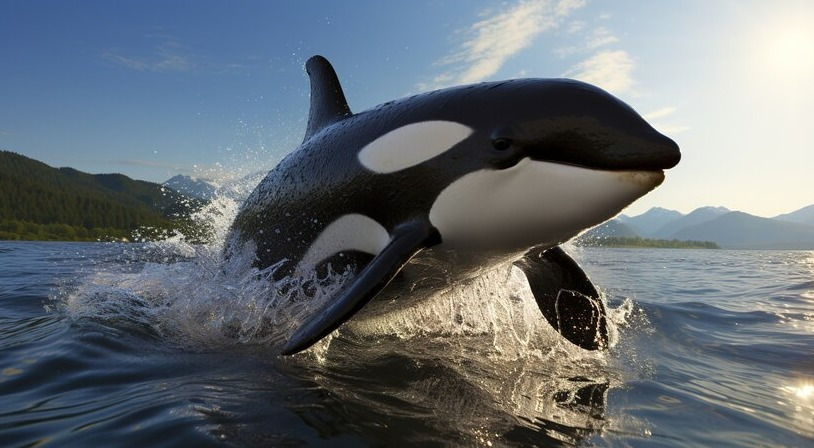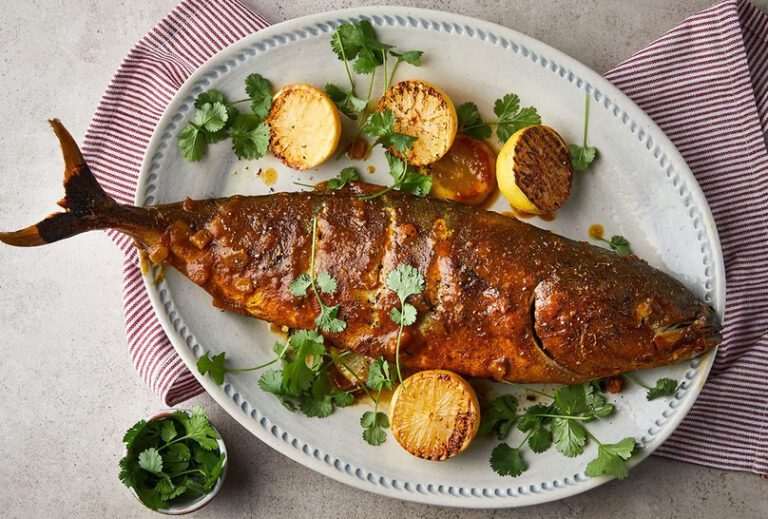Orcas Favorite Foods & Diet: What Do Killer Whales Eat?
Discover the orcas favorite foods! Dive into their diet, from fish to marine mammals, and unique feeding habits.
Introduction:
Embark on an underwater journey as we unveil the intriguing culinary choices of orcas, also known as killer whales. These apex predators navigate the ocean with grace and power, showcasing a discerning palate that includes a variety of marine delicacies. Let’s dive deep into the oceanic realm and explore the fascinating world of orcas’ favorite food.
Orcas Favorite Food
Orcas, especially resident populations in the Pacific Northwest, have a diet that relies heavily on salmon, with a remarkable 96% consisting of this fish. Their top choice is the Chinook salmon due to its large size and high fat content, offering essential energy. This strong preference, however, makes orcas vulnerable to changes in salmon availability, emphasizing the need for conservation to support both salmon and orca populations.

Orcas Culinary Adventures: A Comprehensive Exploration
The Hunt for Salmon
Orcas, with their intelligence and hunting prowess, exhibit a particular fondness for salmon. The Chinook salmon, with its rich and oily flesh, stands out as a preferred delicacy. Join us as we delve into the orcas’ strategic hunting techniques and witness their skillful maneuvers in corralling schools of salmon.
Salmon Feasts: A Gastronomic Delight
In the orca’s world, salmon feasts are a culinary delight. Explore how these marine mammals showcase teamwork and cunning strategies to secure their favorite food. The oceanic ballet of orcas maneuvering through the waters in pursuit of salmon is a spectacle worth witnessing.
Diversifying the Menu: From Seals to Squid
Orcas, commonly known as killer whales, are among the ocean’s most skilled hunters, and their diets reflect their intelligence and adaptability. These apex predators have a wide range of dietary preferences, which can vary significantly based on their environment, social structure, and regional prey availability. Here’s a closer look at what orcas enjoy most in their diet:
1. Fish
- Salmon: One of the most popular prey for certain orca populations, particularly in the North Pacific, is salmon. Orcas prefer salmon due to its high fat content, which provides them with the necessary energy for their active lifestyle. They often pursue Chinook salmon, which is larger and has a higher fat content compared to other types.
- Herring: Another favorite fish species is herring, which orcas often hunt in large schools. Orcas use a unique hunting technique known as “carousel feeding” to gather herring into tight groups, making it easier to catch them.
- Cod and Other Fish: In regions where salmon or herring are scarce, orcas will turn to other fish like cod and mackerel. They are skilled hunters and often employ cooperative tactics to herd fish.
2. Marine Mammals
- Seals and Sea Lions: Some orcas, particularly “transient” orcas found along the North American coast, specialize in hunting seals and sea lions. They use stealth and teamwork to catch these agile marine mammals. Often, they will push seals off ice floes or use waves to dislodge them, displaying remarkable ingenuity.
- Dolphins and Porpoises: Orcas are known to hunt other cetaceans, including dolphins and porpoises. These pursuits can be intense and require high-speed chases, showcasing the orca’s impressive speed and coordination.
- Whales: In some areas, orcas prey on young or smaller whales, such as gray whale calves. This behavior is mostly observed in the North Pacific, where orcas team up to separate calves from their mothers.

3. Squid and Octopus
- In areas where fish and marine mammals are less available, orcas may consume squid and octopus. These creatures provide a source of protein and are typically hunted by deep-diving orcas who are more accustomed to lower-light environments.
- Squid is a staple for some orca groups in the colder waters of the Southern Hemisphere, where it’s more abundant. These prey are less common in the diets of orcas from other regions, but they demonstrate the orca’s versatility when it comes to food sources.
4. Birds and Penguins
- In Antarctic waters, orcas sometimes prey on birds, including penguins. They use clever techniques, such as creating waves to knock birds off ice floes, much like their strategy with seals. This behavior is more common among orcas near polar regions, where bird populations like penguins are accessible.
- While birds don’t make up a large portion of their diet, they provide an additional food source, especially in areas with limited access to fish or marine mammals.
Different Types of Orcas and Their Specialized Diets
Not all orcas eat the same food. In fact, scientists categorize orcas into various ecotypes based on their dietary preferences and hunting methods:
- Resident Orcas: These orcas, found in the North Pacific, primarily feed on fish, particularly salmon. They have tight-knit family groups and a more localized range.
- Transient Orcas: Also known as “Bigg’s killer whales,” transients are often found along the coasts and are specialized in hunting marine mammals. They are more nomadic and have smaller, less stable family groups.
- Offshore Orcas: Offshore orcas are more elusive and are thought to primarily consume schooling fish and squid. They are found farther out in the ocean and are known to have a larger range.
Each of these ecotypes has developed hunting techniques and social structures suited to their specific diets, showcasing the orca’s adaptability to different environments and prey types.
Regional Variations: A Culinary Mosaic
Orcas, the majestic marine predators, showcase diverse culinary preferences across different regions. From icy Arctic feasts of seals to temperate waters’ spectacular salmon pursuits and the exotic choices in tropical zones, each locale contributes to a unique culinary mosaic. Within pods, cultural influences shape hunting techniques and local specialties, highlighting the adaptability and intelligence of these marine mammals. Understanding and conserving these regional variations are crucial for preserving the richness of orcas’ diets and maintaining marine ecosystem balance.
FAQs
What is the primary diet of orcas?
There are a variety of predators that interact with orcas, including fish, marine mammals, and seabirds. Their primary prey may vary depending on their environment and the availability of food.
Why do orcas hunt marine mammals?
The food sources in the ocean are marine mammals, which provide substantial amounts of nutrients and energy, which is why orcas are known to hunt them. Marine mammals provide orcas with a substantial source of energy.
How do orcas showcase their intelligence in hunting?
During hunting, orcas demonstrate intelligence by working together in a coordinated way to capture their prey. They strategize and communicate effectively to capture prey like seals and sea lions that are agile.
Do orcas have regional preferences in their diet?
Orcas indeed develop regional preferences based on the availability of prey in different oceans. However, their adaptability shows that they are capable of thriving in a wide range of environments.
Are there any conservation concerns related to orcas’ dietary habits?
In the event that the prey population of the orcas is threatened, conservation concerns may arise. Maintaining a balanced marine ecosystem is crucial to the well-being of both orcas and their prey.
How Do Orcas Hunt Squid?
Embark on a journey into the fascinating world of orcas’ squid hunting techniques, unraveling the mysteries of this underwater gourmet pursuit as you take a deep dive into the fascinating world of orcas.
Conclusion
The orcas’ favorite food journey is a captivating exploration of their sophisticated palate and hunting prowess. From salmon feasts to squid delicacies, these marine predators navigate the oceanic buffet with finesse and finesse. A culinary mosaic of these variations highlights the diversity within orca populations by adding a unique flavor to the mosaic, adding to the culinary mosaic. Our culinary odyssey with orcas concludes with an invitation to explore the wonders that lie beneath the surface of the ocean.







